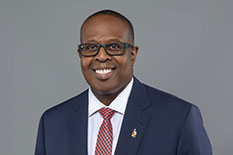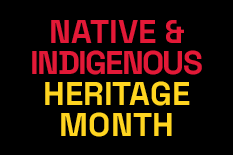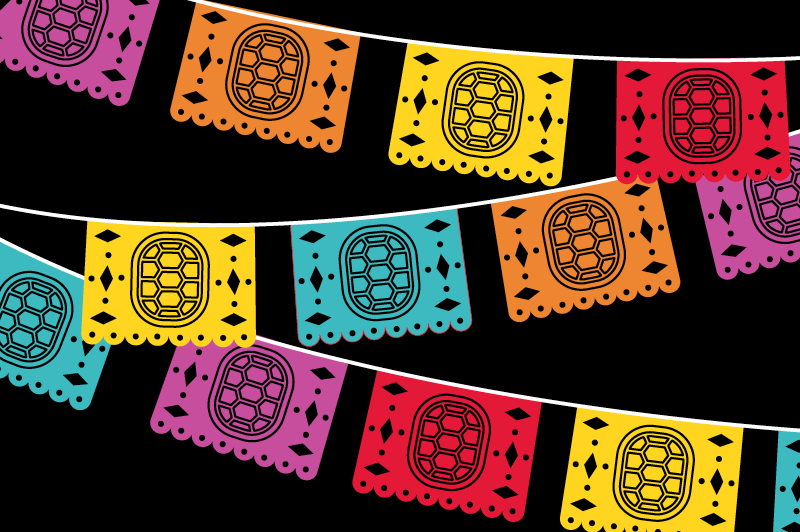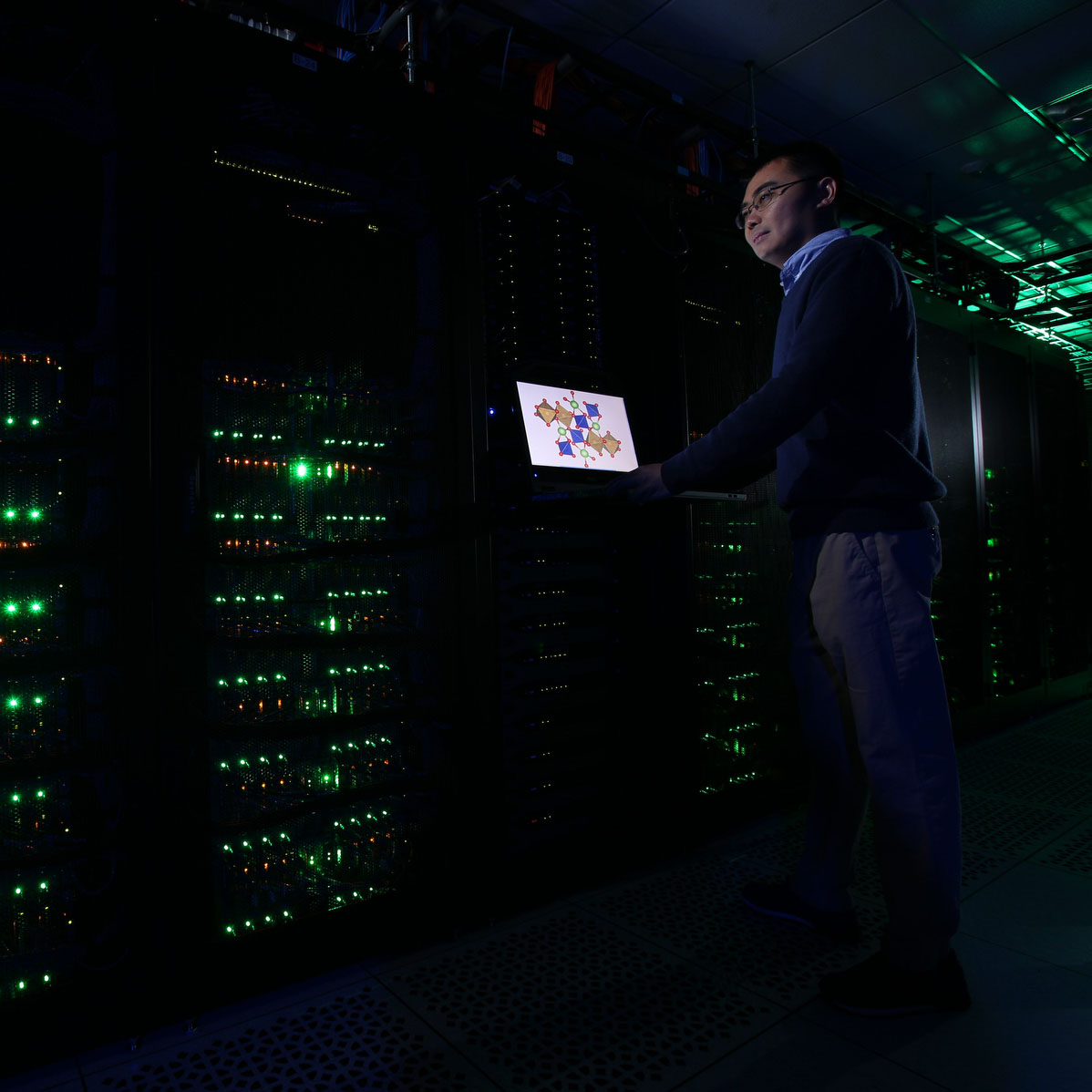News Story
The Clark School Celebrates Native and Indigenous Voices in Engineering

At the A. James Clark School of Engineering we recognize and celebrate our diverse backgrounds, cultures, and contributions, as we work to create a truly inclusive university. Join us as we proudly celebrate Native and Indigenous Heritage Month and these Terp engineers.
Read Dean Graham's Native and Indigenous Heritage Month Message
Each year, the university's Office of Multicultural Involvement and Community Advocacy (MICA) coordinates a calendar of events to commemorate national Native and Indigenous Heritage Month. This year's campus-wide theme is "Back to our Roots," which reflects the deep significance of shared histories and cultural values, as well as the community building in Native and Indigenous spaces, that foster a sense of belonging, resilience, healing, and joy.
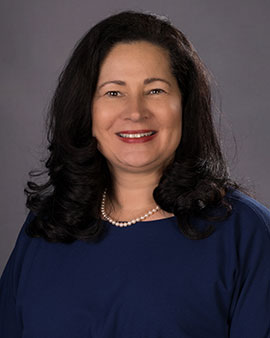 Hands-on learning, unique research opportunities, and well-recognized faculty made the Clark School the right choice for Sheila Cummings '97, a transfer student from Pembroke, North Carolina. The propulsion and controls classes she took at Maryland affirmed her choice to pursue a bachelor's degree in aerospace engineering, and the stage was set for her career. “The exposure to aerodynamics in the wind tunnel—that's why I ended up in the missile defense domain of aerospace, working with helicopters and UAVs,” she says. But it was the diversity at UMD, and being exposed to a broad range of cultures, that helped lay the foundation for her success as a business owner. “Teaming up on projects, learning how to relate, how to respect one another and come together to accomplish a goal—that process prepared me to be a leader,” she says.
Hands-on learning, unique research opportunities, and well-recognized faculty made the Clark School the right choice for Sheila Cummings '97, a transfer student from Pembroke, North Carolina. The propulsion and controls classes she took at Maryland affirmed her choice to pursue a bachelor's degree in aerospace engineering, and the stage was set for her career. “The exposure to aerodynamics in the wind tunnel—that's why I ended up in the missile defense domain of aerospace, working with helicopters and UAVs,” she says. But it was the diversity at UMD, and being exposed to a broad range of cultures, that helped lay the foundation for her success as a business owner. “Teaming up on projects, learning how to relate, how to respect one another and come together to accomplish a goal—that process prepared me to be a leader,” she says.
Cummings began her career working for the Naval Research Laboratory in Washington, D.C., before moving to Huntsville, Alabama, to work with the Missile Defense Agency. After nine years, in 2009, she set out on her own, founding Cummings Aerospace with a focus on model-based systems engineering, modeling and simulation, software engineering, mechanical and electrical design, and advanced manufacturing. Today, the Huntsville-based company employs more than 100 employees in offices in Alabama, Florida, and Arizona. “The role we play in our nation's defense and that of our allies, to protect the freedoms we enjoy every day, it's a remarkable opportunity,” she says, “worth all the hard work.”
Proud to identify as a Native American from the Lumbee Cheraw Tribe, Cummings grew up in a community where support for STEM programs was minimal. She credits her eighth grade math teacher for identifying her aptitude for math and science and for challenging her to excel. Today, a community mission of Cummings Aerospace is to increase exposure and access to the sciences, especially among socioeconomically disadvantaged students. The company sponsors, designs, and facilitates STEM summer camps for middle and high school students in partnership with universities and coordinates internship and work-study programs. For Cummings, STEM provides a pathway to success. Her perspective as a Native American increased her drive, but she says STEM is “an amazing way to inspire all young minds.”
“Being a Native American has given me a desire to work harder, to be more successful, and to set an example for other Natives,” she says. “You can break through barriers and create your own destiny.”
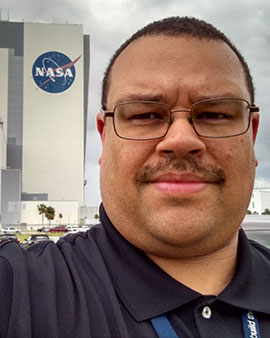 Growing up in Prince George's County and driving past NASA Goddard Space Flight Center, Marcellus Proctor '98, a young astronomy enthusiast, dreamed of working for NASA one day. After graduating from Eleanor Roosevelt High School, Proctor, a member of the Piscataway Conoy Confederacy, entered the Native American Technical and Office Experience Program. That program, and an engineering exploration summer program hosted by Morgan State University, would set him on a path to become the engineer he is today. Given assignments to explore different engineering disciplines, Proctor recalls one particular exercise to calculate the equivalent resistance of a circuit. “No one in the class got the answer, so I asked the instructor if I could try,” he recalls. “I got it right, and after class, the instructor pulled me aside and recommended I look at electrical engineering as a career.”
Growing up in Prince George's County and driving past NASA Goddard Space Flight Center, Marcellus Proctor '98, a young astronomy enthusiast, dreamed of working for NASA one day. After graduating from Eleanor Roosevelt High School, Proctor, a member of the Piscataway Conoy Confederacy, entered the Native American Technical and Office Experience Program. That program, and an engineering exploration summer program hosted by Morgan State University, would set him on a path to become the engineer he is today. Given assignments to explore different engineering disciplines, Proctor recalls one particular exercise to calculate the equivalent resistance of a circuit. “No one in the class got the answer, so I asked the instructor if I could try,” he recalls. “I got it right, and after class, the instructor pulled me aside and recommended I look at electrical engineering as a career.”
After studying pre-engineering at the University of Maryland, Baltimore County, Proctor transferred to UMD's College Park campus to pursue a bachelor's degree in electrical engineering; he later received a master's degree in the same discipline from Johns Hopkins University. Proctor's childhood wish came true, and today he serves as the associate chief for the Electrical Engineering Division at Goddard, NASA's premiere space flight complex. A career highpoint: in 2015, Proctor witnessed from NASA Kennedy Space Center the night launch of a magnetospheric multiscale mission he'd helped to build. “To see my hard work launch and go up through the atmosphere was very gratifying,” he says.
In addition to his courses at UMD, Proctor immersed himself in campus life, joining the university chapter of the Institute of Electronics and Electrical Engineers and the Black Engineers Society, working as a resident assistant at Cambridge Hall, and serving as president of the Native American and Indigenous Student Union, for which he helped organize the annual Powwow. Believing strongly in paying forward his opportunities, through recruiting and mentoring, Proctor chairs Goddard's Native American Employees Resource Group with an aim to increase the number of Native Americans working for NASA. “We bring a different perspective to space,” he says. He recalls the example of the 2023 and 2024 eclipses: “Some Native American tribes hold an eclipse as sacred, a reverent time of reflection. NASA now has an awareness of that.”
As for suggestions for supportive and respectful allyship, Proctor keeps it simple. “Native Americans are as diverse as any other people,” he says. “Come with an open mind, be respectful, and listen.”
Welcome to SACNAS
The Society for the Advancement of Chicanos/Hispanics and Native Americans in Science (SACNAS) at UMD is a voice for underrepresented students, faculty, and professionals that focuses on increasing Native, Indigenous, Latine, Hispanic, and Chicano representation and engagement in the STEM fields. One of 150 university and college chapters of SACNAS, Terp participants tap into a national network of more than 10,000 members across the U.S.
“At SACNAS at UMD, we recognize the importance of integrating traditional Native and Indigenous knowledge into our STEM initiatives, while ensuring our outreach materials and social media presence celebrate their vital contributions to the scientific community,” says chapter president and events chair Osma Gomez, a Ph.D. candidate and Dolphus E. Milligan Graduate Fellow in the Department of Chemistry and Biochemistry and graduate research assistant in the Institute for Research in Electronics and Applied Physics (IREAP).
National organizations, such SACNAS, are crucial to creating a more diverse, equitable, and innovative engineering field that better reflects and serves our society as a whole, Gomez says. Through advocacy and by offering resources, mentorship, and professional development, SACNAS addresses the unique challenges faced by underrepresented students, faculty, and professionals in STEM.
SACNAS at UMD maintains strong ties with the national organization and engages with other university chapters, fostering a broad community of STEM scholars. The UMD chapter welcomes members from all backgrounds who are interested in supporting diversity in STEM. Follow the chapter on Instagram @umdsacnas and Twitter @SACNASatUMD and check out the chapter's events page for what's coming next.
“Whether you're considering membership or just want to learn more, we encourage you to reach out and connect with our community,” Gomez says.
Meet more members of our community.
- LGBTQ+ History Month 2024
- Latine Heritage Month 2024
- Asian, Pacific Islander, and Desi American (APIDA) Heritage Month 2024
- Women’s History Month 2024
- Black History Month 2024
Published November 1, 2024
